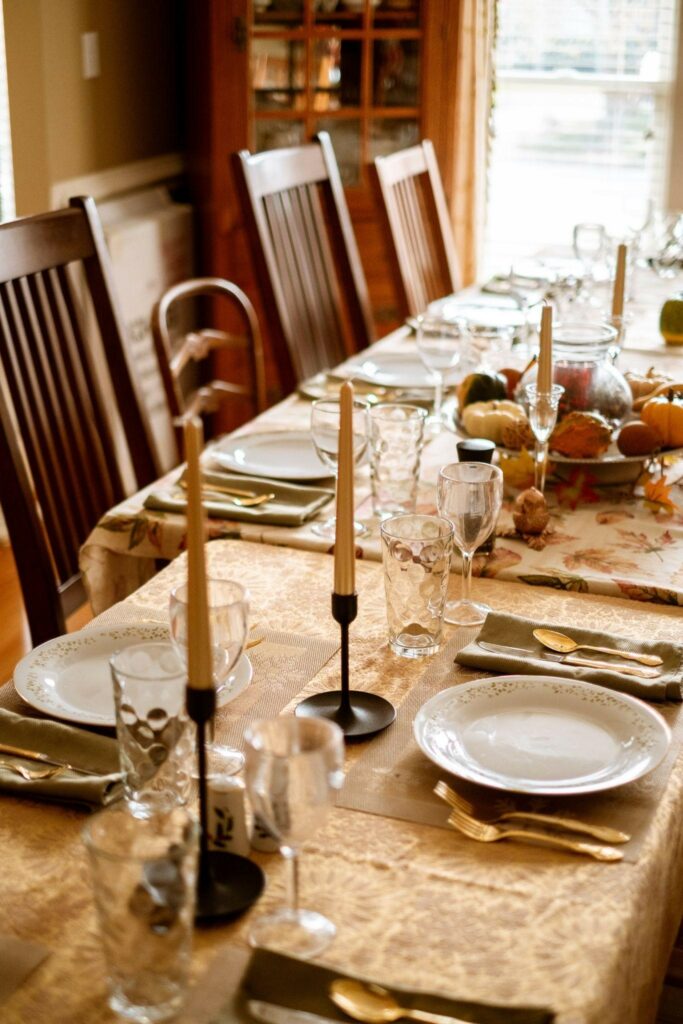As Thanksgiving approaches, a new, aesthetically pleasing trend has been popping up on places like Pinterest and Instagram—tablescaping. If this term hasn’t yet made its way into your news feed, it’s essentially a delightful way of decorating your dining table before hosting a meal with family and friends. Many of us have employed some elements of tablescaping without even knowing it, like putting out a set of decorative plates for the holidays each year. However, the concept of tablescaping takes decorating one step further by treating your table like a canvas on which plates, patterns, objects of art, flowers, flatware, and fabric come together in an artistic display. To help you begin your journey into the world of tablescaping, we’re laying out the basics of this visually appealing craft.
Color Coordination
A great tablescape setup starts with the right collection of colors. We recommend sticking with two or three colors so that you don’t end up washing out the finer details in your arrangement by featuring only one color, or creating too much chaos with a barrage of colors. You may also want to consider choosing colors that reflect the mood of the current season, upcoming holiday, or design scheme of your home. Once your color palette has been established, you can begin to select correlating decorations. Your chosen colors don’t have to dominate the space. They can appear in small pops, like in the flowers you choose or the patterns on your plates.
Employing Patterns
Speaking of patterns, you can use them to add elegance and complexity to your table design. You might be inclined to avoid mixing and matching different patterns, but great works of tablescaping often employ a tapestry of patterns that create cohesion through repetition. Floral patterns are a tablescaping go-to, especially if you are also using real flowers in your design.
A Stand-Out Centerpiece
The main component of your tablescape will be your centerpiece. This decoration should be the first element of your setup that your guests’ eyes are drawn to. It is usually, and unsurprisingly, placed in the center of the table, and often incorporates flowers, fruit, decorative objects, and nature-inspired elements. Think of the magnificent flower arrangements often seen on each table at a wedding reception. These are the kind of eye-catching, dazzling displays that your centerpiece should strive to embody. They should also function as the culmination of your theme. For instance, if your tablescape is fall-themed, your centerpiece may be a cornucopia, or it might be a collection of brass pumpkins. The only limit is your imagination.
Now that you’re familiar with the basics of tablescaping, what better way to test out your new skill than to practice creating an elegant layout on your own dining table? If you’re looking for a home with spacious and stylish dining areas, feel free to contact us about the available homes in our gorgeous Southern California communities.

